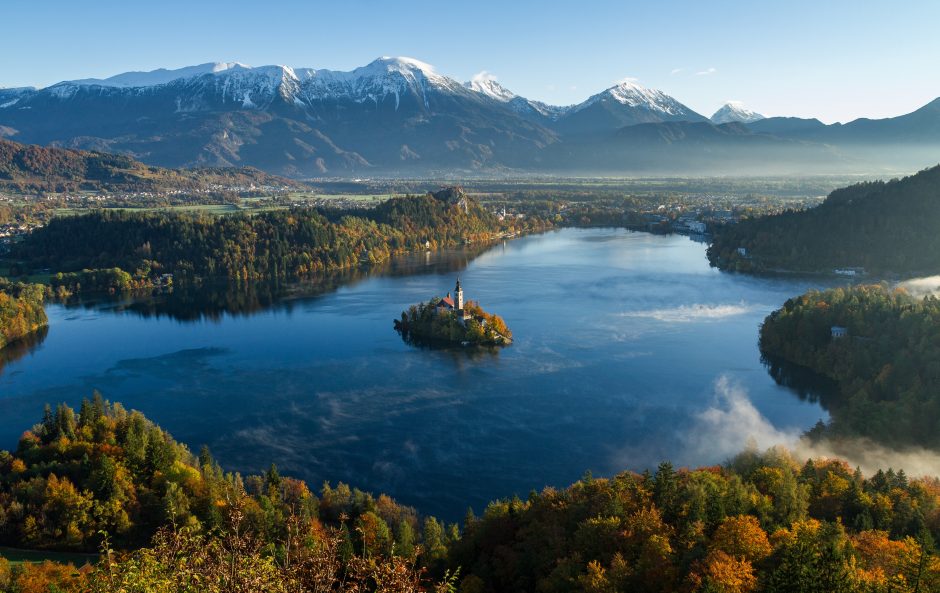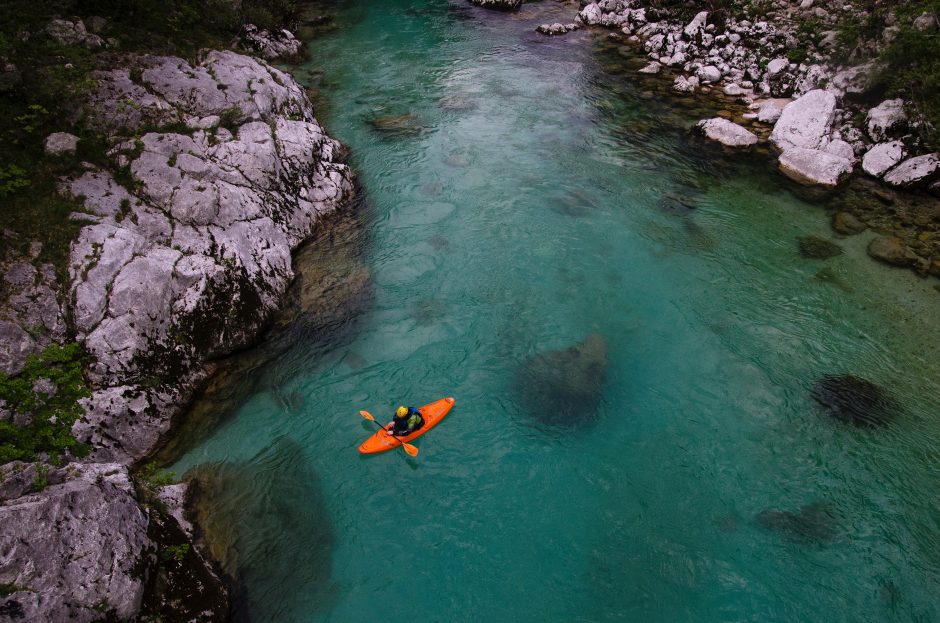Slovenia adopts Climate KIC circular economy proposal: Q&A with Kirsten Dunlop

“We can’t do things the same way and measure success the same way and expect a 1.5 degree world,” says Dr Kirsten Dunlop, CEO of Climate KIC.
In November 2019, the Slovenian parliament passed a motion to adopt an Climate KIC-led proposal called “A Deep Demonstration of a Circular, Regenerative and Low-Carbon Economy in Slovenia.” The initiative is one of eight Deep Demonstrations launched by Climate KIC, which together offer a test bed environment for the ambitious, “1.5-consistent systems transitions” called for by IPCC reports, activists, national and European policy.
Climate activists are on the streets, calling for systemic change. Is anyone taking this seriously? Do we even know how to do it?
“There are people taking it seriously and the world is definitely not starting from scratch. At the end of 2019, for example, I was invited to present a vision of innovation and systemic change to the parliament of Slovenia. It marked a milestone in our 18-month engagement with the country, which has involved close cooperation with seven Slovenian Government Ministries, EIT Raw Materials and the Joint Research Centre.
That day, the Slovenian parliament passed a motion to adopt an Climate KIC-led proposal called “A Deep Demonstration of a Circular, Regenerative and Low-Carbon Economy in Slovenia.” The proposal commits the country to becoming a fully circular economy. That means essentially no new virgin materials.”
Why did Slovenia choose to move in this direction?
“Moving away from traditional linear economic business models and transitioning to closed-loop systems has been defined by the Government of Slovenia as one of the country’s strategic development priorities and an important building block of the carbon-neutral, prosperous and smart future.
Business-as-usual isn’t delivering the pace and scale of change needed. Through this proposal and on-the-ground Deep Demonstration, the country is embracing an unprecedented cross-sectoral and cross-disciplinary approach, which seeks to marry different disciplines and work across boundaries, silos and departments.
Its overall goal is to position Slovenia as a European leader in harnessing the transformative power of circularity to decarbonise its economy and transform communities while promoting wellbeing and prosperity for all Slovenes for decades to come.
It’s a great example of a country embracing the benefits and opportunities of radical, structural transformation for a 1.5 degree world. Really groundbreaking.”
Averting catastrophic global temperature rise will require deep and holistic transformations in every country. For example, a recent report by Material Economics calculated that circular approaches could help to reduce CO2 emissions from materials production in the EU by almost 56 per cent by 2050.
This sounds like a radical policy proposal. How did you arrive there and how does Slovenia intend to implement this ambition?
“In many ways, the process that led up to that moment in parliament (when our proposal for a Deep Demonstration of a Circular, Regenerative and Low-Carbon Economy in Slovenia was adopted) is the design phase of ‘doing systemic change’.
Over 18 months, Climate KIC engaged challenge owners in Slovenia (government ministries and sector leaders), to articulate an ambitious intent for transformational change, and to build demand for a systemic approach. We worked with them to identify constraints and opportunities, frame the problem space, and map relevant systems. And then there is the painstaking work amongst challenge owners to connect funding and programmes across ministries, and so forth.
Implementing the change (i.e. building and managing the portfolio of projects and programmes, and learning from it) comes next. Slovenia’s plan here centres around driving circularity in five main areas:
- Forestry
- Built environment
- Manufacturing
- Food
- Mobility
The programme of work is focused on three pillars for National Circular Economy Transition, working together to decarbonise Slovenia’s socio-economic system through circular economy principles:
- Smart and circular communities
- Circular green development
- Circular policy design & science
A dedicated vehicle called the Slovenian Center for Smart and Circular Transition will serve as the beating heart and physical centre of the entire Deep Demonstration, bringing together the different stakeholders and opening up activities to the wider public.
Climate KIC will provide orchestration services in Slovenia, and help to design a broad-based portfolio of interventions that combine budgets and programmes across old siloes—covering various combinations of technology, policy, education, entrepreneurship, regulation, social innovation, citizen engagement and financial innovation. We will connect this project into our wider community of innovation actors and initiatives across Europe.
You can read more about the detailed working plan in this article by Cliona Howie, Climate KIC’s Head of Circular Economy.”
Are all the answers to achieving a 1.5 degree world really already out there?
“No, because many of the solutions we need are not simple technological substitutions or single-point interventions. While we may be able to make 1.5 work on a spreadsheet, we don’t know yet how to make change spread on the ground. On top of this, the context and conditions for achieving 1.5 will continue to change. Uncertainty is the new normal. There is every reason to feel bewildered by the complexity, uncertainty and urgency of the challenge we face.
The big question is—do we have the right frameworks in place, for rapid testing and learning about what does work, and for rapid scaling, in a context of uncertainty? Deep Demonstrations of whole systems change are one of these frameworks.”
So we need a new model of innovation to catalyse the changes needed?
“Definitely. We need to get communities, organisations and national economies onto a 1.5C footing, quickly. Learning how to achieve this is the real innovation of our time.
For example, if we want to achieve climate impact, traditional models of funding and politics need to change. In this respect, Slovenia is embarking on an incredibly bold experiment, connecting ministries and funding to break down siloes, and to capitalise on the benefits of circularity.
In addition to creating frameworks for collaborative investment, innovation and learning, we also need to broaden the scope of innovation to include finance, regulation, education, governance as well as non-unusual innovation suspects, like the creative arts, community and social movements.
Deep Demonstrations (i.e. advancing innovation across these multiple fronts at the same time in a joined-up, holistic way) can help us identify combinations of actions and investments that lead to pace and scale.
So, yes, we need a new model of innovation to catalyse systemic change. The innovation we really need right now is systems innovation.”
How will the Slovenian people be included in this transition?
“Slovenia recognises the need to treat all people as stakeholders in this change. There is a big focus on communities, well-being and long-term prosperity. The government’s approach will activate: Local communities, civil servants, students and younger generations, teachers and other change agents, researchers and academics, non-governmental and non-profit organisations, Chambers of Commerce and Industry, associations and other representations of interest, Strategic Research and Innovation Partnerships (SRIPs), start-ups, SMEs and companies, as well as economic clusters.”
Can you illustrate the difference between a siloed approach and a systems innovation approach?
“Consider carbon-free mobility in cities. A huge amount of technical work has been done already to develop alternatives to the combustion engine. Every day, we get better at building electric cars or hydrogen buses. But we’re less good at reducing demand for individual car ownership or driving a switch to zero-emissions buses. A holistic approach forces us to answer a list of other questions as well, like how to create more cycle lanes, increase video conferencing, source local ingredients, build pedestrianism into a city’s health strategy, and so on.
In Slovenia, systemic innovation will tackle material production and waste flows across the key economic systems and value chains mentioned above. It will also use training, education and capacity-building to create change agents, to foster life-long learning and to disseminate insights and good practices as widely as possible, and it will use innovative policy initiatives and experiments to ensure enabling conditions”
Slovenia is clearly on board. What other governments or organisations are embracing a systems innovation approach?
“We are running seven other Deep Demonstrations, eight in total, covering: Cities, food, landscapes as carbon sinks, circular regenerative economies, just transitions in coal and heavy industry regions, maritime hubs, long-termism and resilience. Over 30 different locations are involved across Europe. Our long-term goal is for the Deep Demonstration model to help trigger rapid decarbonisation and strengthened resilience across Europe. Many of our current project partners come from EU member states eligible for EIT’s Regional Innovation Scheme. To accelerate impact in these areas, we are integrating our approach with EU Instruments on smart specialisation, on national climate and energy plans, and on coal regions in transition. In Silesia, Poland, for example, we are working on coal transitions, while in Cyprus we’re working with the government on the decarbonisation of shipping.”
How will you know if systems innovation is creating genuine impact?
“Our impacts framework includes an evaluation and learning capability that draws on structured sense-making and frequent calibration of our overall portfolio of projects. It’s our desire that decision-makers have actionable intelligence and knowledge at their finger tips. Beyond Climate KIC and our partners, we also want others to follow our journey and benefit from our learnings. To that end, we are committed to reporting transparently on our Deep Demonstration programme as it unfolds.”
Finally, there are a sea of climate initiatives out there. How confident are you that your systems innovation initiatives will cut through?
“Whatever the solutions to Europe’s climate emergency, innovation has to be at the heart of them. The beauty of a systems approach is that it harnesses innovation in all its different forms and channels them towards simultaneous actions on multiple fronts. In our view, this is the fastest route to the transformation that we so urgently need.”
We have covered a lot. Is there anything else important you would like to share about Climate-KIC’s systems innovation approach?
“The global problem of climate change cannot be solved one start-up or one technological breakthrough at a time. Only by changing whole systems and whole economies will we create the low-carbon world we all want to see.”

